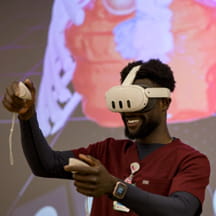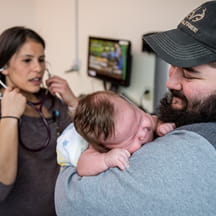When it comes to health care innovation, pediatrics is often left behind. Children represent 23% of the population but only 10% of national health care funding. Recognizing this disparity, Children’s Mercy Kansas City created an ecommerce platform, PedsMrkt, to accelerate pediatric innovation and collaboration across a historically fragmented market.
PedsMrkt provides a curated space for product awareness, intellectual property promotion, and resource sharing among buyers, sellers, and partners in pediatrics. Dawn Wolff, vice president of strategy, innovation, and partnerships for Children’s Mercy’s Center for Pediatric Innovation, said this can be revolutionary for smaller hospitals who may lack resources and pediatric startups who struggle to connect with children’s hospitals.
“Children’s hospitals need a way to disseminate their innovative pediatric solutions so all children can benefit,” Wolff said. “Limited resources, high development costs, and fragmentation present huge barriers to getting pediatric innovations into the market.”
Early PedsMrkt members include children’s hospitals, mental health startups, pediatric device startups, digital health and remote monitoring companies, and pediatric associations. Members get their own “storefront” to highlight their organization and products.
Children’s Hospital of Orange County (CHOC) celebrated the launch of its PedsMrkt storefront in June, introducing four product offerings. “This is a gateway to innovation and an opportunity to unite innovators and health care professionals in new, meaningful ways,” said Tiffani Ghere, manager of the Sharon Disney Lund Medical Intelligence, Information, Investigation, and Innovation Institute (MI4) at CHOC. “The future of pediatric care lies in creativity and collaboration, and this partnership empowers us to continue building brighter futures for the kids we serve.”
The latest innovations
Some marketplace product examples include:
- A cradle that places a child in a consistent position to increase the likelihood of a successful lumbar puncture. Since Nemours Children’s Hospital started using the device, babies have shorter lengths of stay, residents feel more successful at the procedure, and parents are more satisfied because it is less traumatic and painful for the baby.
- An online training platform that uses virtual reality, mobile, and web-based devices to educate parents in medical device procedures, post-surgical care, and chronic “care at home” needs management.
- A special safety valve designed to mitigate tension events on IV tubing by separating tension and creating a sterile barrier, removing the need for restocks or loss of care.
- A telehealth platform that incorporates interactive features to make telehealth appointments more engaging for children and their families. Early pilot results show 90% of children exceeded their expected time in session by as much as 2.5 times.
Children’s Mercy collaborated with Children’s Hospital Association’s Pediatric Learning Solutions (PLS) to include the Black Cloud Game™ — an immersive educational tool that enhances critical thinking skills and facilitates wellness discussions in nursing — in PLS’s critical thinking curriculum.
Amy Nelson, vice president of PLS, highlighted the importance of hospital collaboration. “Getting direct hospital input when creating materials is crucial to our development process,” Nelson said. “We are grateful to have worked with Children’s Mercy so we can provide hospitals with employee well-being resources.”
More than a market
Beyond the ecommerce platform, PedsMrkt launched an online community where innovators share best practices, discuss challenges, access resources, and stay up to date on the latest advancements in pediatric health care.
“The community builds awareness and collaboration across institutions, so we don’t duplicate efforts with limited resources,” Wolff said. “It brings together like-minded clinicians to say, ‘How can we get better outcomes for kids?’ We invite all hospitals to join the PedsMrkt community as we work together to accelerate pediatric innovation.”


